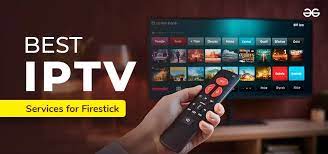Internet Protocol Television (abonnement iptv) is transforming how we consume television content. Unlike traditional broadcast methods, IPTV delivers TV programs and videos through internet protocols, enabling more interactive and personalized viewing experiences. As broadband internet becomes more ubiquitous and faster, IPTV is poised to revolutionize the entertainment industry.
What is IPTV?
IPTV stands for Internet Protocol Television. It uses the internet to deliver television content, as opposed to the traditional methods of satellite or cable. IPTV services can be live TV, time-shifted media (like catch-up TV or start-over TV), or video on demand (VOD).
How Does IPTV Work?
IPTV relies on a robust internet connection and a subscription to an IPTV service provider. The content is transmitted in small data packets over the internet, which are reassembled and decoded by an IPTV set-top box, smart TV, or any compatible device. Here’s a brief overview of the process:
- Content Acquisition: Content is acquired from various sources, such as live TV broadcasts, on-demand videos, or even user-generated content.
- Encoding: The content is encoded into a digital format suitable for streaming over the internet.
- Content Delivery Network (CDN): The encoded content is then distributed through a network of servers, ensuring that it can be streamed efficiently and reliably to users.
- Streaming: When a user selects a program, the content is streamed in real-time from the CDN to the user’s device.
Types of IPTV Services
- Live Television: This mirrors traditional broadcasting but over the internet. Viewers can watch TV programs as they are broadcasted in real-time.
- Time-Shifted Media: This allows users to watch previously broadcasted content at their convenience. Examples include catch-up TV and start-over TV.
- Video on Demand (VOD): VOD services allow users to select and watch any content from a catalog whenever they choose. This is akin to how streaming services like Netflix operate.
Advantages of IPTV
- On-Demand Content: IPTV provides greater flexibility with on-demand content, allowing users to watch what they want, when they want.
- Interactive Services: IPTV supports interactive features like pause, rewind, and fast forward, which are not possible with traditional TV.
- Multiple Devices: IPTV can be accessed on various devices, including smartphones, tablets, smart TVs, and computers, offering a seamless viewing experience.
- Personalization: IPTV platforms often use data analytics to offer personalized content recommendations based on user preferences and viewing history.
- Scalability: IPTV systems can easily scale to accommodate more channels and users without the need for significant infrastructure changes.
Challenges and Considerations
- Bandwidth Requirements: High-quality IPTV streaming requires a robust and reliable internet connection. Bandwidth limitations can affect the quality of the streaming experience.
- Content Licensing: Securing rights for content distribution can be complex and expensive, which may impact the range and variety of content available.
- Latency Issues: Unlike traditional broadcast, internet streaming can introduce latency, which may affect live sports and other real-time events.
- Technical Challenges: Ensuring compatibility across a range of devices and maintaining a consistent user experience can be challenging.
Future of IPTV
The future of IPTV looks promising as technology advances and internet connectivity improves. Integration with 5G networks is expected to enhance the streaming quality and reduce latency issues. Additionally, the rise of smart home ecosystems will likely see more IPTV services integrated with other smart devices, creating more cohesive and immersive viewing experiences.
Moreover, the continuous development of artificial intelligence and machine learning will further personalize content recommendations, making IPTV services even more appealing to users. The advent of virtual and augmented reality could also bring about new ways of consuming television content, potentially offering more interactive and engaging experiences.
Conclusion
IPTV represents a significant shift in how we consume television and video content. With its myriad advantages, such as on-demand viewing, interactivity, and multi-device compatibility, IPTV is well-positioned to become the dominant mode of television consumption in the digital age. While there are challenges to overcome, the future of IPTV looks bright as it continues to evolve and innovate, reshaping the entertainment landscape for years to come.

